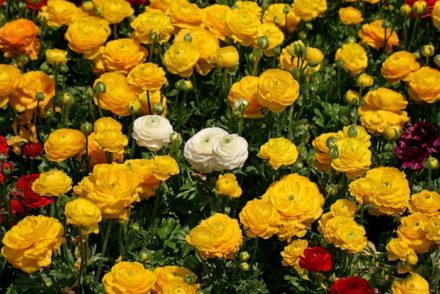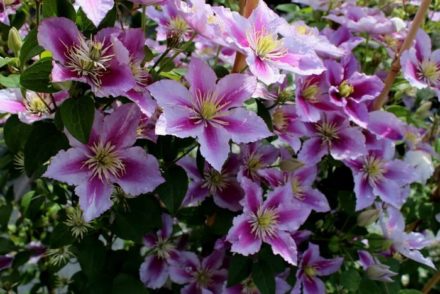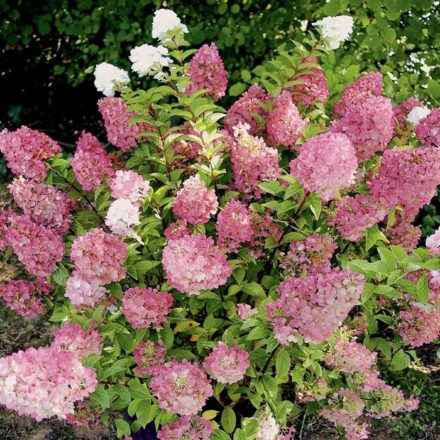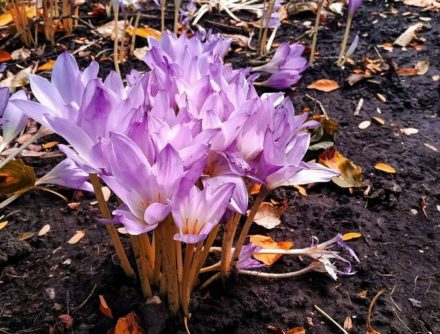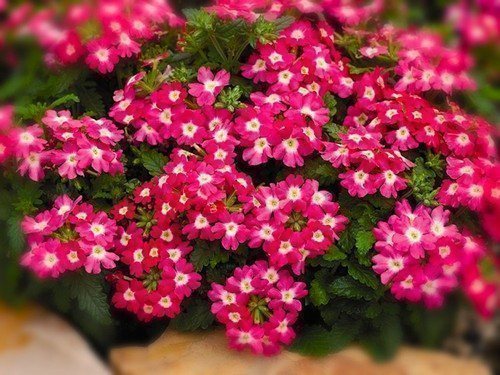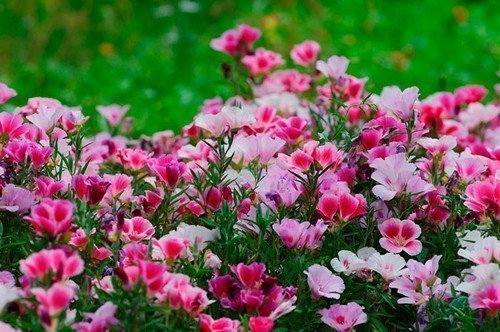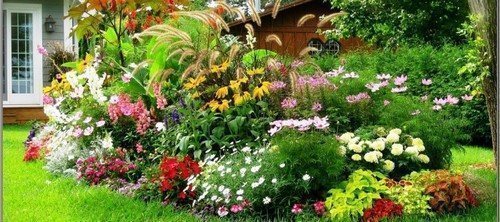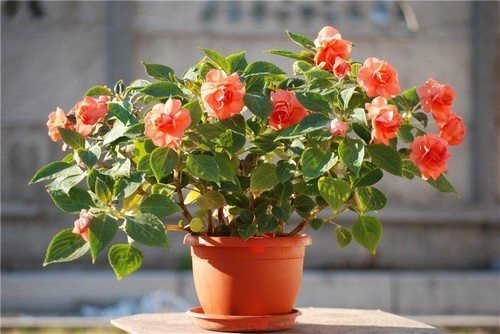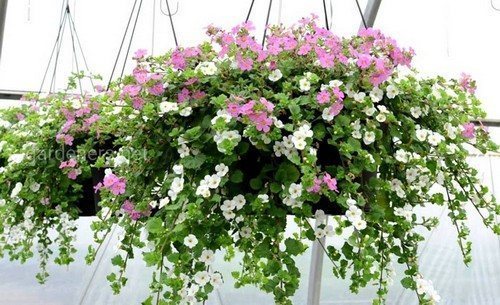Ranunculus is a beautifully flowering rhizomatous plant of the Ranunculaceae family. It grows in small neat bushes from 20 cm to 80 cm in height. On straight stems there are strongly dissected dark green leaves and peony-shaped flowers with a different number of petals - from semi-double to densely double. The variety of colors and compact shape make it possible to grow ranunculus in the garden or as an indoor flower.
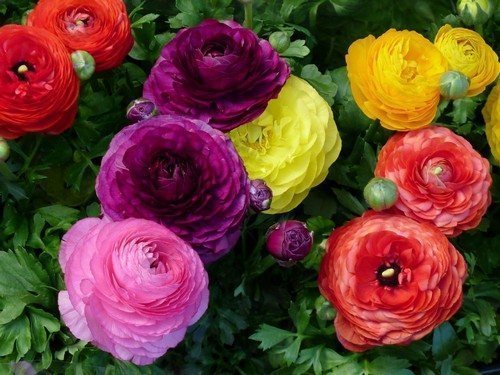
Choosing a landing site
It can be planted in both sun and partial shade. When grown in shaded areas, the color of the petals is better preserved and the duration of flowering increases. The plant does not tolerate drafts and prefers a quiet place protected from the wind. To avoid rotting, tubers should not be planted in waterlogged areas with stagnant water.
Soil preparation
The plant loves light, fertile, well-drained soil with neutral acidity. If the soil is heavy or clayey, add river sand. To increase fertility, rotted manure, compost or mineral complex fertilizers are added, and to neutralize - chalk, slaked lime or dolomite flour.
To germinate rhizomes at home, the soil is prepared by mixing equal parts of garden soil, humus, black soil and river sand.
Preparing tubers for planting
Ranunculus rhizomes are spider-like nodules ranging in size from 1.5 to 3 cm.
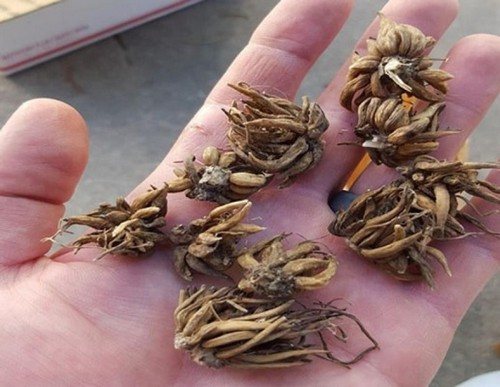
Tubers are planted either immediately in a flower garden in a permanent place, or in a container for home germination. They are carefully inspected - there should be no mold or rotting areas.
Before planting, the tubers are soaked. To prevent diseases, use a solution of the biological fungicide Fitosporin. To stimulate growth and increase protective forces, stimulants Epin, Zircon, NV-101 are used. Solutions are prepared strictly following the instructions for the preparations. Soaking in water or a weak solution of potassium permanganate for 2–3 hours is allowed. The liquid should not cover the entire rhizome to ensure access to oxygen. Immediately after the procedure is completed, planting begins.
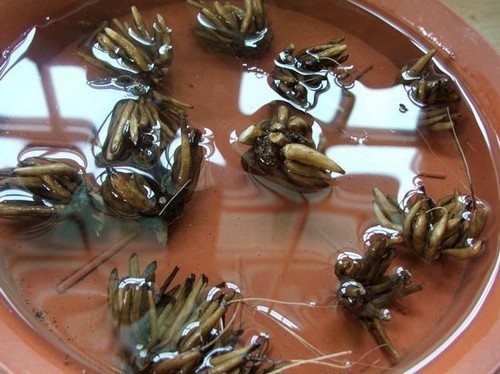
Planting tubers
It is better for plants to immediately determine a permanent place, since they do not like transplanting. Plant in open ground after the soil warms up to +10° and above. Usually this is the beginning of May. The soil is slightly moistened. At a distance of 10–15 cm, dig holes 5–8 cm deep. The rhizomes are lowered to the bottom with their “legs” down. Sprinkle with earth. The planting site is watered and covered with covering material for the first time, until the threat of frost has passed.
Houses for germination ranunculus planted in early April. To do this, it is convenient to use flower pots with drainage holes in the bottom, boxes with a height of at least 10 cm, and individual peat or plastic cups. Before planting, wash the container thoroughly. Drainage is placed at the bottom. This could be expanded clay, perlite, fragments of polystyrene foam, eggshells. Make small depressions and plant the nodules with their “legs” down, leaving the top open. Then water with a solution of a fungicide or growth stimulator.
Pots with planted rhizomes are placed in a bright place at a temperature of +16–18°. If the daylight hours are less than 12 hours, the seedlings must be supplemented with light. Water with warm, settled water. If there is a lack of water, the plants wither; if there is too much, the rhizomes can rot.
If the air in the room is too dry, you should place an open container of water nearby or use a humidifier. Once every two weeks, seedlings are fed with complex mineral fertilizer in a dosage half as much as indicated in the instructions for adult plants.
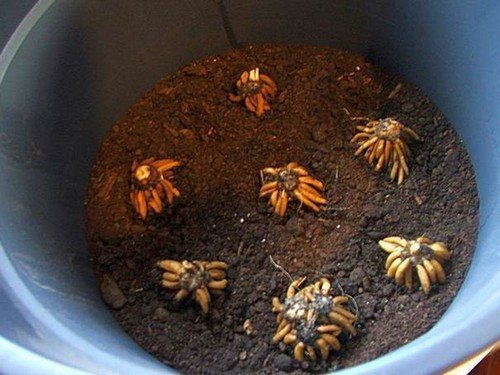
Sowing seeds and caring for seedlings
Sow in February. The seeds are soaked in a solution of a growth stimulator. The substrate is placed in a container, moistened, and leveled. Seeds are placed on damp soil at a distance of 2–3 cm. Sprinkled with earth or sand in a 3 mm layer. The top of the container is covered with glass or transparent film.
Place it in a bright place. The optimal temperature is +15–17°. Periodically moisten the soil with a spray bottle. The greenhouse is ventilated daily for 10–15 minutes. After 5 days, the container with seedlings is transferred to heat with an air temperature of +22–24°. After 2–3 weeks, the first shoots appear and the seedlings are returned to their previous conditions. Immediately remove the glass or film. When the second pair of leaves appears, they begin to pick and plant them in separate pots.
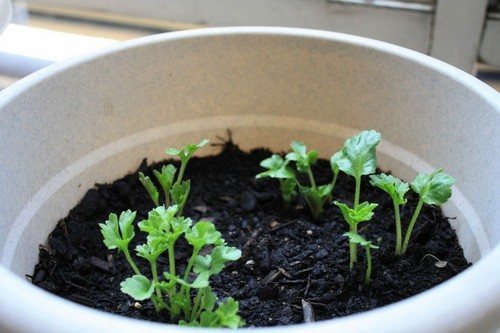
Planting seedlings in open ground
Planting time depends on soil temperature. When it warms up to +10°, you can start planting. The seedlings are watered abundantly within 2 hours. In the flower garden, holes are made at a distance of 10–15 cm from each other and the size is slightly larger than a pot of seedlings.Carefully remove the seedling, trying not to destroy the earthen lump, and carefully roll it into the hole. Cover with earth, lightly compact, and water with warm water. The planting depth in open ground must exactly match the depth in the pot. It is advisable to mulch the plantings with sawdust, peat, and pine bark.
Seedlings obtained from seeds bloom only in the second year. Ranunculus from nodules will bloom this season with proper agricultural practices.
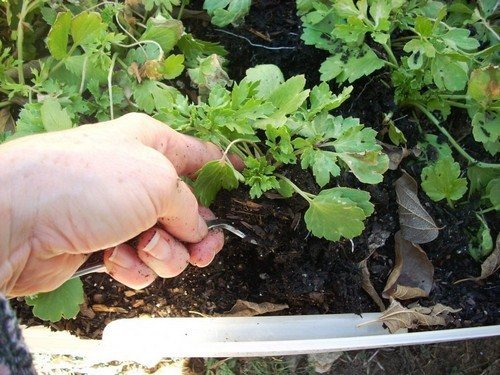
Caring for an adult plant in the garden
In order for the plant to be strong and healthy, it is necessary to provide it with optimal care.
- Watering should be systematic, but without fanaticism. Excessive moisture can cause the rhizomes to rot, causing mold to appear on the leaves and buds to fall off.
- After watering, it is advisable to loosen the soil.
- Fertilizing is carried out once every 2 weeks with potassium fertilizer. Mixtures based on vermicompost work well.
- A necessary condition for spectacular flowering is the timely removal of wilted flowers.
- Periodically, the bushes are inspected for pests. When aphids, thrips or spider mites appear, ranunculi are treated with insecticides.

In the fall, when the leaves and shoots turn yellow, wither and dry out, they are cut off. The nodules are dug up, cleaned, and pickled in a fungicide solution for 30 minutes. Then they are air-dried in the shade for about 3 days and only after that they are put away for storage. Since they cannot tolerate cold, they are stored at a temperature of +4–6° and humidity not higher than 60%. The tubers are carefully covered with dry moss and placed in a paper bag.
Caring for an adult plant at home
Growing ranunculus as an indoor flower is not difficult, but it has its own subtleties:
- When the shoots reach 6–8 cm, the plant is transferred to a bright, sunny room with an air temperature of +20–22°. It is better to use windows facing south for this. In summer, in warm weather, flowers feel comfortable on open balconies and terraces.
- Watering systematically when the top layer dries. Overmoistening should not be allowed. You can periodically spray the leaves with warm water.
- Twice a month the plants are fed with complex fertilizer for flowering indoor plants.
- When the buttercup fades, it is transferred to the shade. After the above-ground parts turn yellow and dry, the stems are cut off. The flower is transplanted into fresh soil and placed in a dark place with a temperature of +15–18° for a month.
When young sprouts appear from the ground, the plant is carefully dug up and the rhizome is divided. Tubers can be planted in new pots.
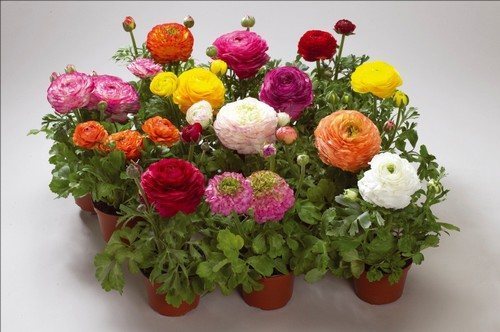
Growing ranunculus is not difficult, even for novice gardeners. High-quality planting material and compliance with agricultural technology are the key to their lush flowering.


